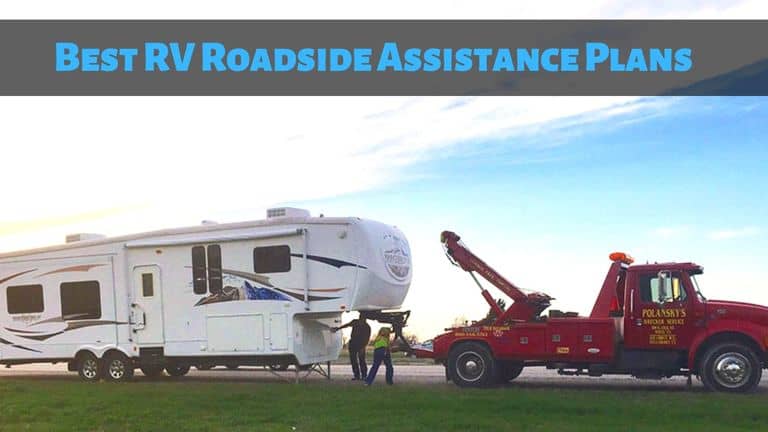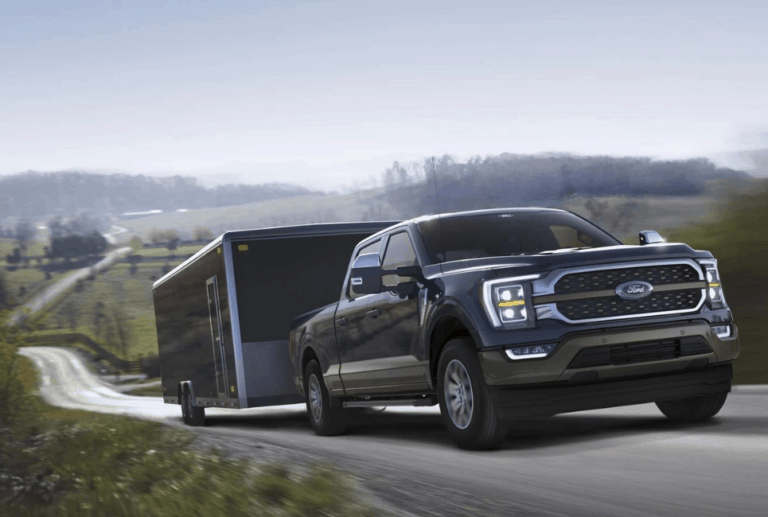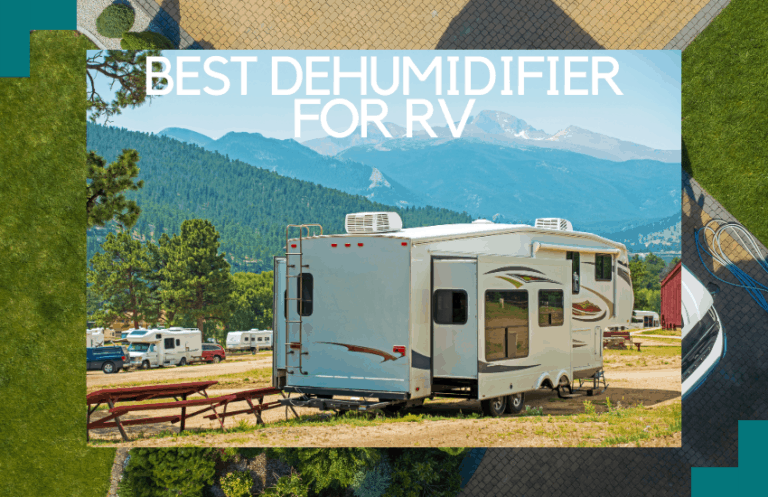How Much Wind Can an RV Withstand? Find Out Here!
- Allstate RV Insurance Review: Is it Any Good? - July 15, 2021
- How Much Wind Can an RV Withstand? Find Out Here! - July 13, 2021
- Best RV Mail Forwarding Service Options Out There! - August 21, 2020
“Who needs a house upon a hill when you can have one on four wheels and take it anywhere the wind might blow?” And anyway?
Driving and parking in an RV during high winds can be unnerving. The first thing that comes to mind is “Will my RV be OK or will it flip over from all this wind?” Well, if your is out, it might not flip, but your will likely rip or just come clean off of it because of wind gust speeds.
It is not easy to know how much wind could flip over an RV if it can at all. As there are so many factors involved with your RV and the outside elements plummeting against it.
Factors such as the RV’s weight, its design, whether it is a travel trailer or a motorhome, its size, weight distribution, how well it is secured, how much wind is blowing and at what angle, and driving speed all affect the impact of whether your RV can or cannot withstand the strong wind.
Bottomline Upfront
The weight of your RV has a lot to do with how much wind your RV can withstand. Whether or not you have a sway bar for your rig—if you’re pulling an RV—and more are all factors on how much wind your RV can withstand while driving. If you feel unsafe, you should pull over. If you’re parked, you should always put your awning in if it’s windy unless you have tie-downs and feel comfortable having your awning out. If winds get to 30+ MPH, don’t drive in it because it could be dangerous. However, a parked RV can withstand winds of around 100 MPH. If you feel unsafe, go to a more stable place to weather the storm if possible.
Bad Weather – High Winds While Traveling

When traveling on the highway during a 30-50 mph (48-80 km/hr) wind storm, can cause your RV to flip over. If the wind is unmanageable, you should pull over somewhere safe until it calms down. It’s important to know your vehicle’s threshold and your own too.
Try not to forget to pay attention to your feelings. If it makes you nervous and uncertain, don’t force yourself to endure gusty winds around 30-50 mph. Some folks will refuse to drive in 20 mph winds. Your safety and the ones around you are more important, so pay attention to wind advisories and your intuition.
Save 50% on Roadside Assistance RV Plans (for New Members Only) with this special offer from Good Sam.
High Winds While Camping
RV’s can handle more heavy wind impact when it’s stationary than during driving conditions. A parked RV can handle winds up to 100 mph (160 km/hr) without overturning, but many factors like wind direction, weight within the RV, weight distribution within the RV, how it is secured, and its surroundings to name a few.
You can’t control windy weather conditions, so it is best to be prepared and plan for windy conditions when you are camping or storing your RV.
How to Drive in High Winds?
Turn off your Cruise Control. You should manage your driving manually when the wind is bad.
Sidewind can come without warning causing a frightening experience while driving because it can push your vehicle sideways making you struggle to keep the vehicle on the road. Should you experience side winds, try not to panic. Just steer your vehicle in the opposite direction, carefully, and slow down.
If a headwind or tailwind occurs, the effect is not as drastic as losing control of the vehicle during side winds. These conditions affect your highway speed. Headwinds will push against you as you drive which causes resistance that slows you down and making you burn more fuel. Tailwinds push you forward which speeds you up, burning less fuel. If either occurs, then adjust your speed accordingly, carefully.
Also, keep in mind that accompanying the can make things even more difficult as far as driving.
How to Manage your RV During high winds, while Driving and Camping?

First, you should keep abreast of weather conditions before hitting the road, while on the road, and at your final destination, each day.
Check Your Wind Status With These Handy Tools that can be used on your laptop and Smartphone:
- Bookmark this on your Desktop: Live Wind Alert anywhere in the World
- Here is a link to the National Weather Service that provides wind predictions and high wind alerts across the USA
- Pick a Website or an APP Alert that best suits your needs: APP Weather Alerts
- Check out The Weather Channel or The Storm Prediction Center and Weather Underground
Windfinder is handy for your Smartphone:
- Find them on Facebook: Windfinder on Facebook
- Download their free APP on your Smartphone: Windfinder APP
If on the road, reduce your speed. If needed, keep in the slow lane and put your hazards on. Better still, get off the highway and take side roads that accommodate slow traffic or get off the road and find a sheltered area until the wind subsides.
When entering and leaving the highway, take your speed right down low and avoid sudden stops, as high winds could easily jack-knife or tip your travel trailer or RV over when making if that happens.
If you are parked and your RV is being hit broadside with high winds, angle it in the direction from where the wind is coming. This will lessen the impact of wind pressure and help avoid your RV from toppling over.
- Know your surroundings in case you have to evacuate your trailer or R0V… is there somewhere safe you can take shelter
- Find a place to park by that has some shelter, like a building, a row of tall trees but avoid being under trees if possible as branches can fall and cause major damage and even death.
- If you are in a travel trailer, stay hitched to your vehicle to help build strength and weight.
- Make sure your stabilizing jacks are securely in place and on level ground
- Distribute weight as even as possible to avoid swaying due to uneven weight
- Make sure your kids and pets are brought inside
- Lock-up loose items within the RV should rocking occur
- Put away your BBQ, chairs, your satellite dish, and anything else that could blow away
- Close up your slides, the awning, and your windows
- Keep an emergency kit full of supplies should injuries occur
- Unplug unnecessary electronics
- Don’t ignore your feelings. If you are uncomfortable being in your RV, find a safe shelter somewhere else, if possible. Avoid flying debris while doing so. It is better to be safe than sorry. You can’t be replaced, but your RV can.
Is it Safe to Drive in High Winds?
You can drive in high winds but the degree of high winds should alter your speeding pattern. If your pushing through strong winds, slow your speed right down.
Keep your distance from others too. If you are being hit with crosswinds causing you to sway… try to pull off the road to an area that has shelter until the winds die down. Crosswinds are dangerous as your RV does not have as much support and strength on the sides as it does front and back.
As mentioned, you can always go on side roads at a slow speed until the wind can be managed better. You get to see some great sights that you wouldn’t normally see on the highway. If you are worried about being somewhere at a specific time, don’t! You should only be worried about getting to your destination in one piece.
Using the Beaufort Scale
The Beaufort scale has been used since the early 1800s and it provides an estimated measurement of wind force for sea and land.
The common scale ranges from 0 to 12 categories. In actual fact, the scale reaches 17 but the categories from 12-17 are for tropical typhoons which mostly relate to China and Taiwan.
You can use this chart to take heed if needed, keeping in mind what forces your RV can handle up to a certain degree.
| Force | Wind Speed | Descriptive Term | Effects Observed at Sea | Effects Observed on Land | |
| Km/h | Knots | ||||
| 0 | Less than 1 | Less than 1 | Calm | Sea surface like a mirror, but not necessarily flat. | Smoke rises vertically. |
| 1 | 1-5 | 1 -3 | Light air | Ripples with the appearance of scales are formed but without foam crests. | The direction of wind shown by smoke drift, but not wind vanes. |
| 2 | 6-11 | 4 – 6 | Light breeze | Small wavelets, still short but more pronounced. Crests do not break. When visibility good, horizon line always very clear. | Wind felt on face. Leaves rustle. Ordinary vane moved by wind. |
| 3 | 12 9 | 7- 10 | Gentle breeze | Large wavelets. Crests begin to break. Foam of glassy appearance. Perhaps scattered whitecaps. | Leaves and small twigs in constant motion. Wind extends light flag. |
| 4 | 20-28 | 11- 16 | Moderate breeze | Small waves, becoming longer. Fairly frequent whitecaps. | Raises dust and loose paper. Small branches are moved. |
| 5 | 29-38 | 17-21 | Fresh breeze | Moderate waves, taking a more pronounced long form. Many whitecaps are formed. Chance of some spray. | Small trees with leaves begin to sway. Crested wavelets form on inland waters. |
| 6 | 39-49 | 22 – 27 | Strong breeze | Large waves begin to form. The white foam crests are more extensive everywhere. Probably some spray. | Large branches in motion. Whistling heard in telephone wires. Umbrellas used with difficulty. |
| 7 | 50-61 | 28 – 33 | Near gale | Sea heaps up and white foam from breaking waves begins to be blown in streaks along the direction of the wind. | Whole trees in motion. Inconvenience felt in walking against wind. |
| 8 | 62-74 | 34 – 40 | Gale | Moderately high waves of greater length. Edges of crests begin to break into the spindrift. The foam is blown in well-marked streaks along the direction of the wind. | Breaks twigs off trees. Generally impedes progress. Walking into wind almost impossible. |
| 9 | 75-88 | 41 – 47 | Strong gale | High waves. Dense streaks of foam along the direction of the wind. Crests of waves begin to topple, tumble and roll over. Spray may affect visibility. | Slight structural damage occurs, e.g. roofing shingles may become loose or blow off. |
| 10 | 89-102 | 48 – 55 | Storm | Very high waves with long overhanging crests. Dense white streaks of foam. Surface of the sea takes a white appearance. The tumbling of the sea becomes heavy and shock-like. Visibility affected. | Trees uprooted. Considerable structural damage occurs. |
| 11 | 103-117 | 56 – 63 | Violent storm | Exceptionally high waves. Sea completely covered with long white patches of foam. Visibility affected. | Widespread damage. |
| 12 | 118- 133 | 64 – 71 | Hurricane | Air filled with foam and spray. Sea entirely white with foam. Visibility seriously impaired. | Rare. Severe widespread damage to vegetation and significant structural damage possible. |
Tips
When driving in High Winds:
- Keep both hands on the wheel
- Watch the traffic around you…if big rigs decide to pass you, slow down further because the wind velocity from their rig could cause further wind havoc on your driving conditions and make it more challenging to stay on the road or in your lane.
- If high winds are expected during your travels, fill your fresh water tank with water to add weight.
- Keep an eye on your fuel gauge because high winds cause you to burn more gas.
- Take caution opening doors during high winds as they may resist or surprize you and swing-out very fast and hard.
FAQs
How can I figure out which way the wind is blowing?
Click here for some interesting and fun ways to determine wind direction.
How do I make sure RV Wind Damage is Insured?
You will need to ask your insurance provider to include wind damage and that your awning is covered too.
It would be best to keep it separate from your home insurance because it could result in higher premiums. Your RV insurance will be less expensive in the long run if it is on its own.
When your RV Policy is being negotiated, you will need to come to an agreement on replacement cost should the RV be totaled.
Ask about emergency roadside assistance too and have all your documents with you to refer to when traveling.
Read through your RV Insurance before agreeing to it, just to be sure it covers what you asked for and need and doesn’t include what is not necessary.
Final Thoughts
So many factors can influence how much wind and RV can withstand. It’s best to review your owner’s manual to determine the weight of your trailer or RV and see what safety precautions they provide. Also, read your manual about proper gear selection in driving conditions.
Ensure that your leveling jacks are set up properly, and on even ground. Be aware of upcoming weather conditions and plan accordingly.
Weather can be unpredictable so it would be a good idea to have an emergency plan organized and communicated with your traveling companions, so you are all on the same page, should the unexpected happen. Your safety and those are around you is the utmost of importance, so take heed and be responsible during high wind conditions. Don’t ignore signs from the atmosphere or your inner gut. Stay safe!
Save 50% on Roadside Assistance RV Plans (for New Members Only) with this special offer from Good Sam.
Further read:









![Black Friday & Cyber Monday RV Camper Deals [2020 Deals]](https://rvpioneers.com/wp-content/uploads/2020/11/Black-Friday-768x497.png)